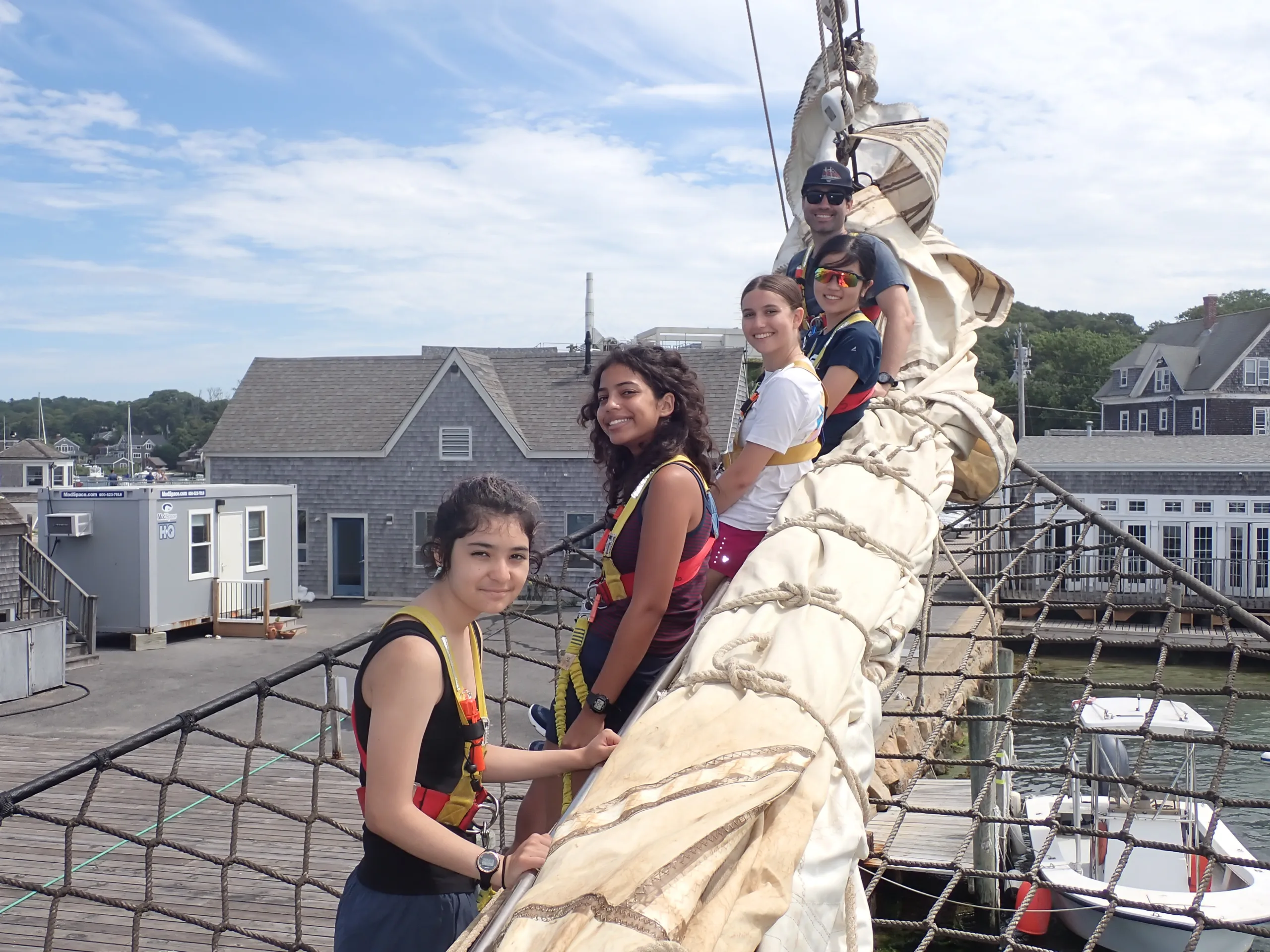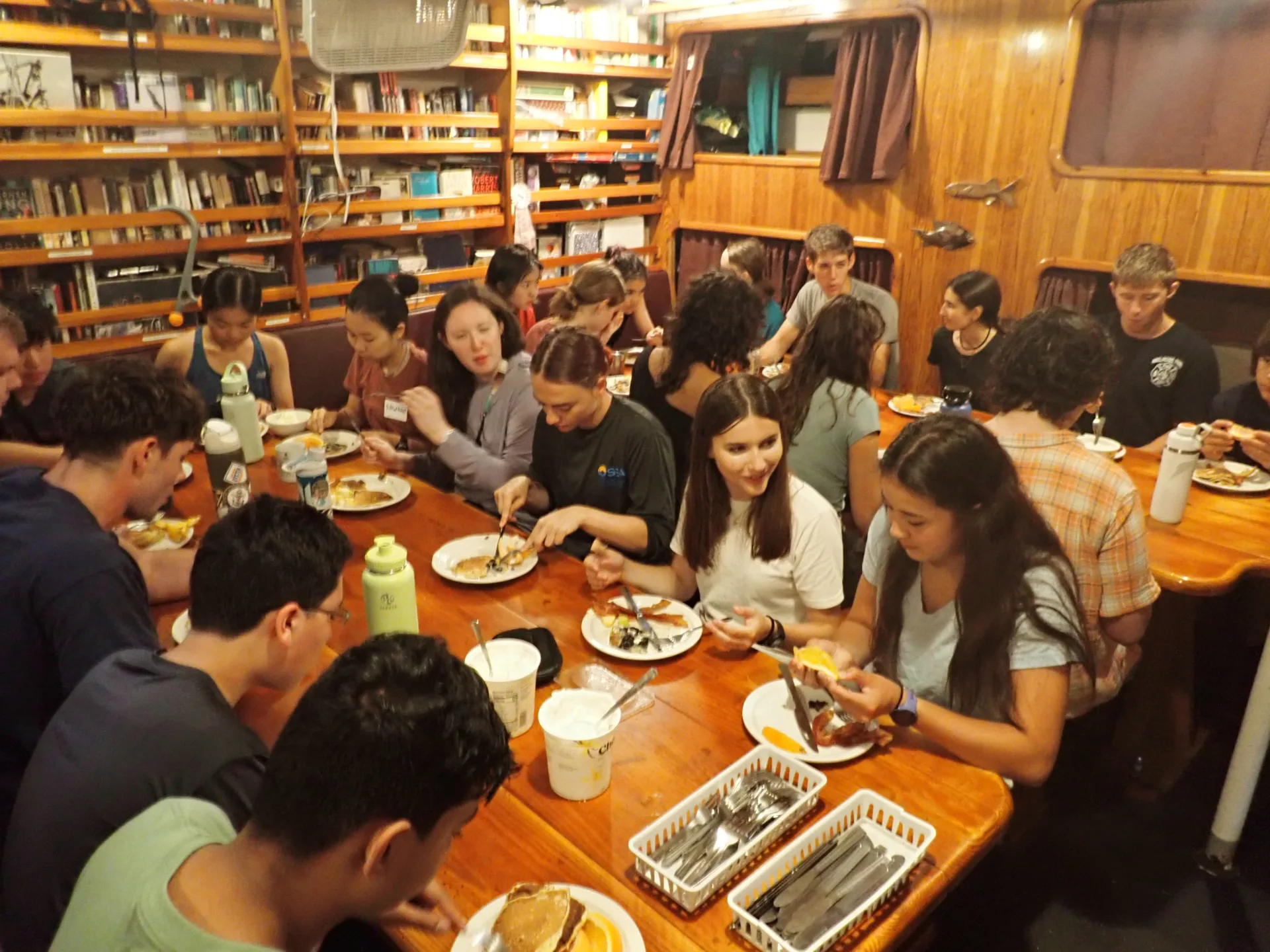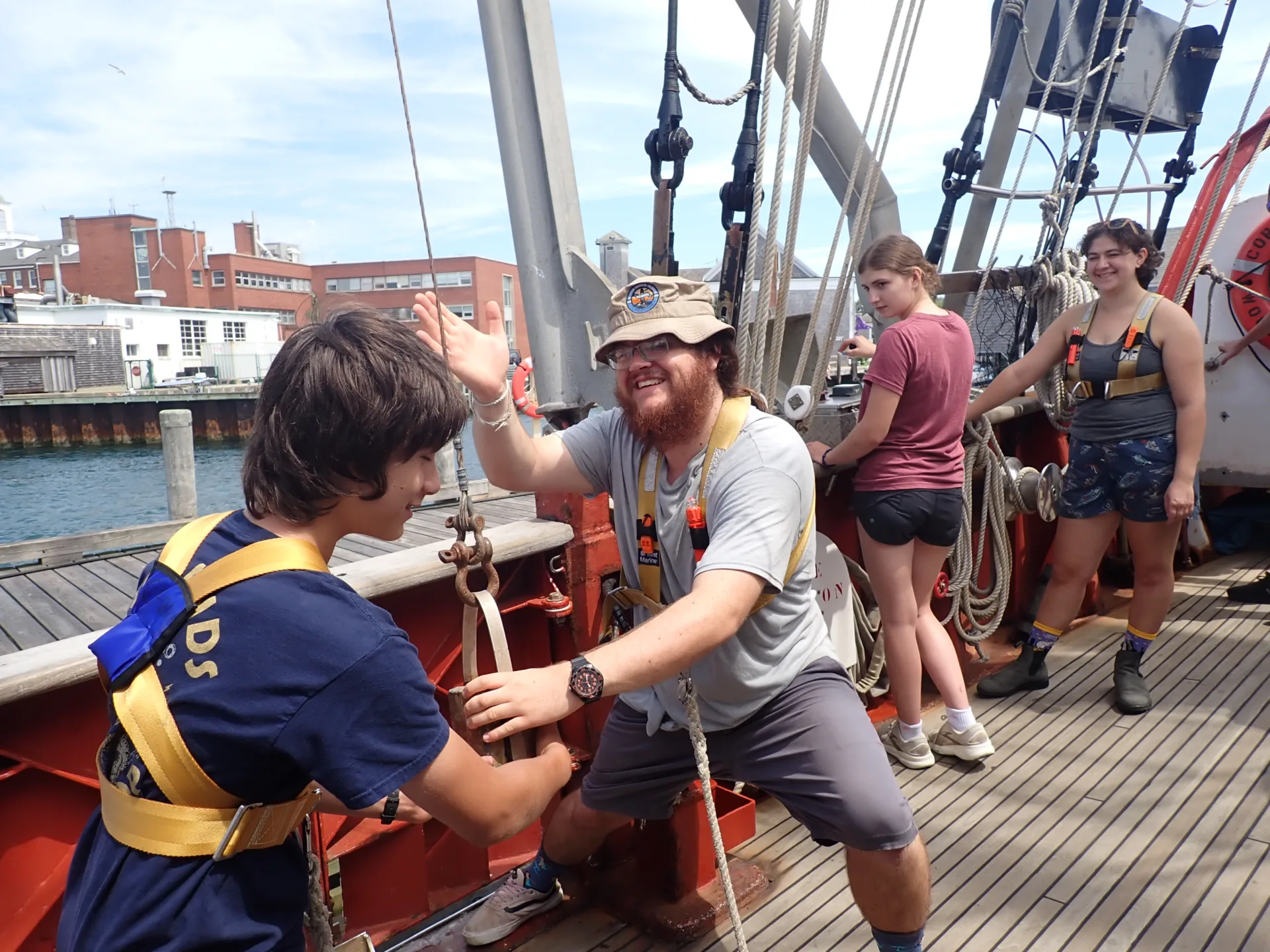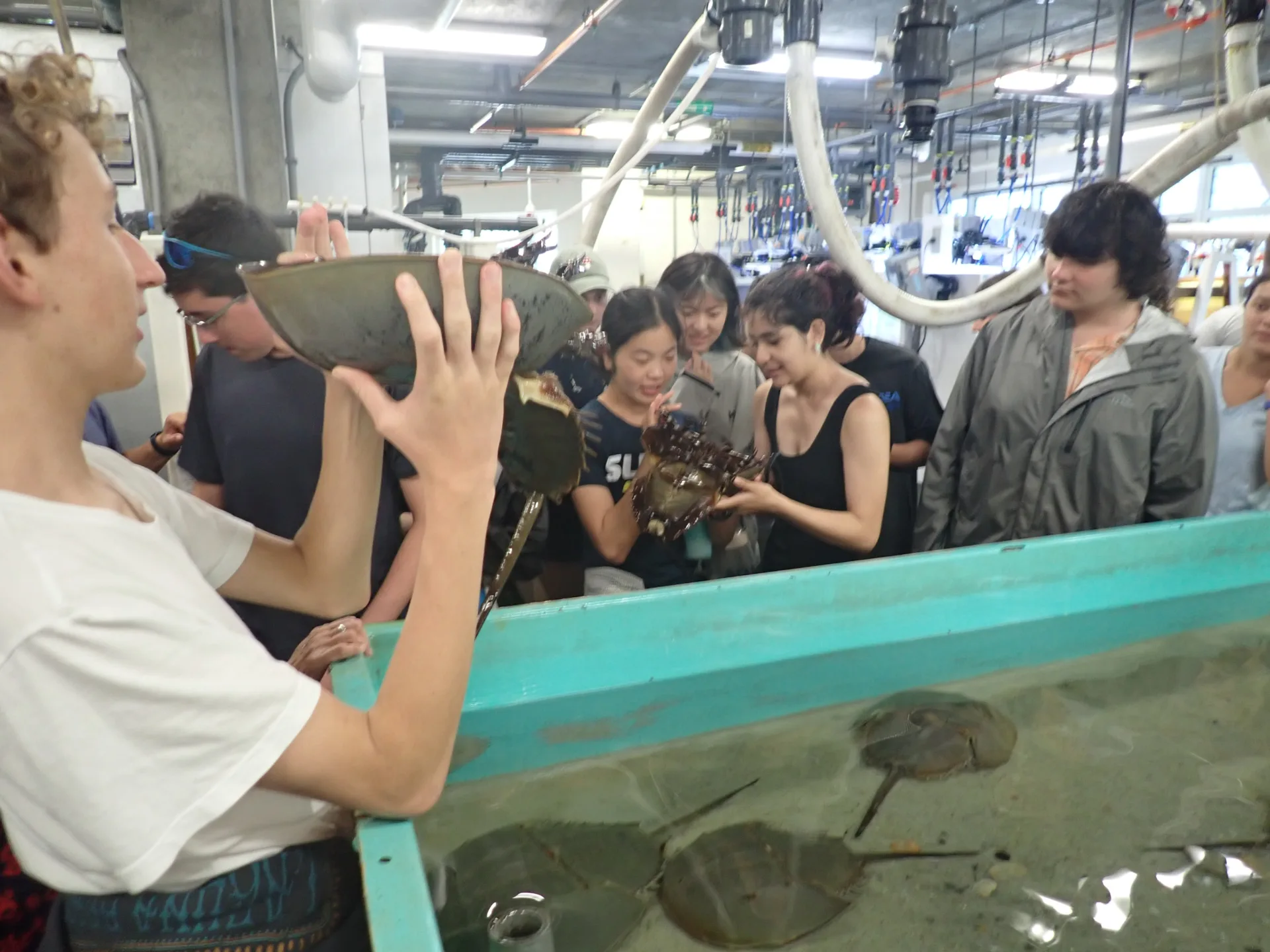Programs Blog
Harnesses in the headrig, Hydrowinch training, and horseshoe crabs!!!!

Thursday, 17 July 2025
Noon Position: (Lat and Long): 41 deg 31.4’ N x 070deg 40.3’W
Ship Heading (degrees): NA – Alongside Dyers Dock
Ship Speed (knots): NA – Alongside Dyers Dock
Log (nm): 0.0
Weather / Wind / Sail Plan (from 1300 Watch Change): Foggy morning with light rain turning to warm, sunny, and breezy.
Description of Location: Alongside Dyers Dock in Woods Hole, MA
Oh my goodness, what a day. We have been busy from sun up to sun down! Final day of preparations and training before we set sail for the high seas. I am excited to report that students began their training in the lab, learning how to operate our scientific winch and hydraulic J-Frame. Both are used in tandem to deployed heavy oceanographic equipment. Every student had hands-on, driving the winch and J-Frame and calling out proper commands while also observing all safety protocols.
Additional training included the responsibilities of standing deck Watch which incudes helm, lookout, Boat Check and a turn at doing dishes in the galley! While up forward, students were learning how to fit, adjust and comfortably wear their safety, chest harnesses. These are worn during Watch so students can clip in while working near the ship’s rail and while traversing across the head rig (forward netting at the bow of the ship) during sail handling.
In the afternoon there was a tour of Woods Hole and the many scientific organizations. It was an exercise in keeping track of various acronyms: Marine Biological Laboratory’s Marine Resource Center (MBL/MRC), Woods Hole Oceanographic Institution’s (WHOI) Discovery Center, National Oceanic and Atmospheric Administration’s National Marine Fisheries Service (NOAA/NMFS), the Buzzards Bay Coalition (BBC), and Woodwell Climate Research Center (WCRC) and of course SEA! Many highlights for each student but two of mine were seeing the faces of students as they held a horseshoe crab in their hands and a group photo with the metal sphere used in the original Alvin submersible.
Back aboard our home the Corwith Cramer we were treated to a lesson by the Chief Scientist about the oceanography of the Gulf of Maine and waters around Cape Cod and the Islands. This will be essential background information as students begin to collect data for their own scientific explorations.
Believe it or not, all of that in one day. But now we are ready to set sail tomorrow morning after a good night’s sleep. From here on out you will be hearing directly from the students about their experience, so stay tuned.
Cheers
Chief Scientist -Jeffrey M. Schell
P.S. From here on out students will be writing these blogs, so stay tuned!



Recent Posts from the Ships
- Ocean Classroom 2024-A collaborative high school program with Proctor Academy
- Collaborations and Long-term Commitments: SEA’s Caribbean Reef Program Sets a Course for Coastal Programs that Compliment Shipboard Experiences.
- Sea Education Association students prepare for life underway using state of the art nautical simulation from Wartsila Corporation.
- SEA Writer 2022, Magazines From the Summer SEA Quest Students
- Technology@SEA: Upgrades Allow Insight into Ocean Depths
Programs
- Gap Year
- Ocean Exploration
- High School
- Science at SEA
- SEA Expedition
- SEAScape
- Pre-College
- Proctor Ocean Classroom
- Protecting the Phoenix Islands
- SPICE
- Stanford@SEA
- Undergraduate
- Climate and Society
- Climate Change and Coastal Resilience
- Coral Reef Conservation
- Marine Biodiversity and Conservation
- MBL
- Ocean Exploration: Plastics
- Ocean Policy: Marine Protected Areas
- Oceans and Climate
- Pacific Reef Expedition
- The Global Ocean: Hawai'i
- The Global Ocean: New Zealand